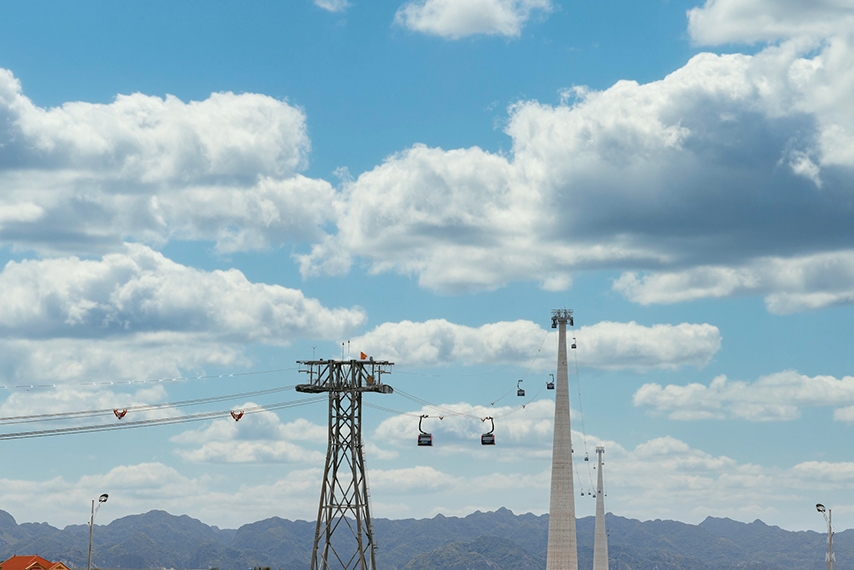1. Overview of Hang Pagoda (Hai Phong)
1.1. Why does Hang Pagoda (Hai Phong) make tourists curious?
When mentioning Hang Pagoda (Hai Phong), this name usually refers to Du Hang Pagoda, also known as Phuc Lam Tu, one of the ancient and long-standing pagodas in the port city. Alongside this, the local community is also associated with Hang Do Son Pagoda, contributing to the diversity of spiritual life here. The ancient pagoda is not only a place of worship but also a cultural intersection preserving many layers of the city's history.
The unique attraction of Hang Pagoda (Hai Phong) stems from its long history, traditional Northern Vietnamese architectural style, and the sacred atmosphere during festival seasons. At the beginning of the year, thousands of tourists and locals from all over come here to pray for a year of peace and luck. Commemorative activities for the Truc Lam Zen sect and solemn Buddhist rituals contribute to creating a meaningful and tranquil space, leaving a deep impression on everyone who visits.
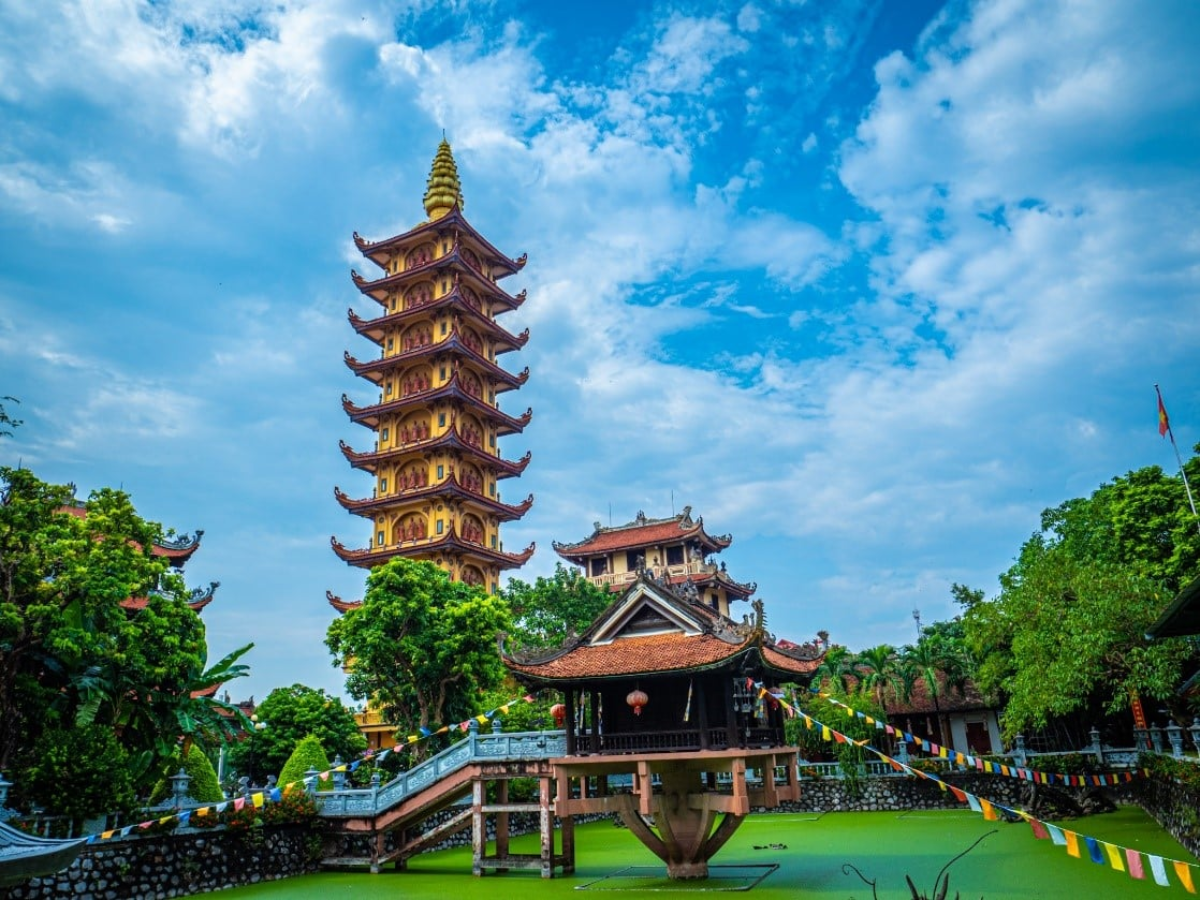
Hang Du Pagoda has a long history. (Source: Collected)
1.2. Geographical Location
Du Hang Pagoda is located right in the city center, only about 3 km from Hai Phong station. Although situated on a bustling street with heavy foot traffic, just stepping through the temple gate, visitors feel detached from the noisy pace of life, immersing themselves in a quiet and peaceful space that contrasts with the outside world.
By 2025, when searching for information about Hang Pagoda (Hai Phong), visitors should note the distinction between the two aforementioned addresses. Hang Le Chan Pagoda is a Buddhist center with historical depth, while Hang Do Son Pagoda makes an impression through its seaside worship activities, especially during the summer. Currently, map applications clearly update the details of these two locations, helping visitors easily choose a journey that suits their personal needs.
2. Discovering Du Hang Pagoda (Phuc Lam Tu)
2.1. History of Formation and Development
Spanning over a millennium, Hang Pagoda (Hai Phong) was built during the Tien Le period (980-1009), marking the milestone of Buddhist khai phá (pioneering/development) in the port land. In the late period of King Le Dai Hanh, the first patriarchs laid the foundation for preaching Buddhist doctrines in the locality. Over subsequent generations, the pagoda has been preserved and renovated, becoming a place of practice and community activities with significant influence.
The pagoda has undergone numerous renovations to maintain its beauty. Notably, in 1672 during the reign of King Le Gia Tong, the pagoda underwent major repairs, with a new bell tower built, the grounds expanded, and auxiliary structures completed. The pagoda also added a library, a statue garden, and a stupa garden during renovation phases in 1899 and 1917, resulting in a relatively complete architectural complex as it is today.
Not only holding religious value, the pagoda also bears deep historical significance by serving as a revolutionary activity site during the pre-uprising period. In 1926, it hosted the memorial service for patriot Phan Chu Trinh, demonstrating national pride and Buddhism's contribution to the national movement. Today, Du Hang Pagoda is the head pagoda of the Lam Te Zen sect in Hai Phong, strongly influenced by the Truc Lam Yen Tu Zen school, and annually holds activities commemorating King Tran Nhan Tong.

Hang Pagoda (Hai Phong) through many renovations. (Source: Collected)
2.2. Ancient Architecture and Unique Features
Visiting Hang Pagoda (Hai Phong), visitors are easily captivated by the traditional Northern Vietnamese architecture. The pagoda is designed in the ancient 'Dinh' letter style, with the main Buddha sanctuary consisting of 7 bays located at the center of the complex. A 3-story bell tower with gently curved roofs, a spacious courtyard, and ancient trees casting shadows create a solemn and tranquil atmosphere, separate from the bustling city outside.
Most notable is the large bell tower with the 'Phuc Lam Tu Chung' great bell. Besides, structures such as the ancestor's house, the monks' dining hall, the monks' quarters, the rear house, the library, and the stupa garden are all harmoniously and solemnly arranged. A prominent feature is that the pathways and foundations of the pagoda are paved with high-quality Bat Trang bricks, providing a solid and meticulous feel to every detail.
The pagoda also preserves many artifacts of profound artistic and cultural value, such as ancient bronze bells, stone chimes, bronze incense burners, Buddha statues, and an outdoor Avalokitesvara Bodhisattva statue. Not to be missed are the ancient stone steles and the 'Trang A Ham' sutra collection, carefully preserved through many generations of abbots, becoming valuable resources on Vietnamese Buddhism. It is the blend of the sacred space with the beauty of ancient architecture and sculptural art that leaves a deep impression on visitors each time they visit.
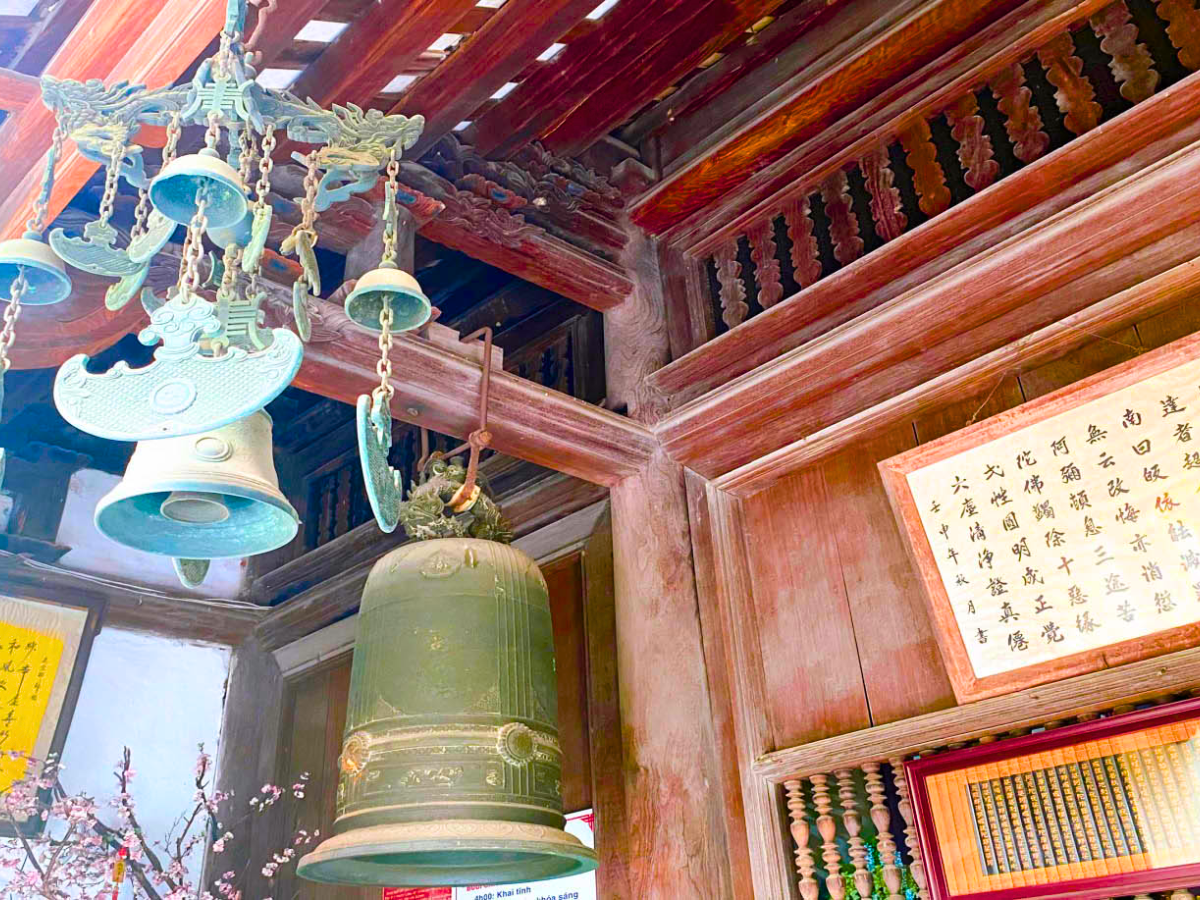
The ancient bell at Hang Pagoda (Hai Phong). (Source: VinWonders)
2.3. Spiritual Value and Special Cultural Features
Annually, Hang Pagoda (Hai Phong) is the center for many major festivals and Buddhist activities of the city. The most special are the memorial ceremonies for the Truc Lam monks such as King Tran Nhan Tong (on the 2nd/11th lunar month), Huyen Quang and Ly Dao Tai (on the 3rd/11th lunar month), attracting a large number of monks, nuns, Buddhists, and tourists from all over the country to attend. On these days, the pagoda is splendidly decorated, solemn ceremonies are held, filling the air with a sacred atmosphere.
During Tet Nguyen Dan and the early days of the year, the pagoda becomes more bustling with many people coming to pray for peace and blessings, wishing for a year of health and tranquility. Activities such as chanting, listening to Dharma talks, releasing animals, and distributing lucky money are not only spiritually meaningful but also create a space for community connection. For many families in the region, devoutly visiting the pagoda at the beginning of the year has become a beautiful, long-standing tradition.
In addition, the pagoda also maintains many regular activities such as doctrine classes for children and youth, summer retreat courses, Dharma exchange programs, and Buddhist community connections. These activities help preserve and promote traditional cultural values, while also contributing to nurturing the soul, morality, and building the spiritual life of the community.
2.4. Directions to Du Hang Pagoda
Getting to Hang Pagoda (Hai Phong) is very convenient thanks to well-planned roads and clear signage that helps visitors easily find the pagoda. Transportation options are extremely flexible. Visitors can choose traditional taxis or ride-hailing services operating all day with reasonable fares. Additionally, bus routes 2 and 3 have stops near the pagoda, which is convenient if you want to save costs and experience the daily life of the city.
The pagoda grounds have free parking for motorbikes and bicycles with careful staff supervision. For cars, visitors should park at nearby roadside parking areas as the pagoda is located on a small street. The pagoda is open from 6 AM to 6 PM daily. During major holidays, the opening hours will be extended to serve guests and monks visiting for worship.
3. Suggested 1-Day Spiritual Travel Itinerary in Hai Phong
To make your pilgrimage complete, visitors should build a reasonable itinerary among the destinations for the day. In the morning, start by visiting Hang Pagoda (Hai Phong) in Le Chan, enjoying the peaceful space and cool atmosphere. After performing rituals and capturing moments with the ancient architecture, you can visit the eateries around the area to enjoy crab noodle soup and crab spring rolls, famous specialties of the city.
In the afternoon or evening, continue your journey to Hang Do Son Pagoda to experience the serene atmosphere by the sea. Here, you can participate in tea meditation rituals, relax leisurely, and watch the sunset over the sea, creating a harmonious balance between spirituality and nature. Around the Le Chan or Do Son areas, there are a variety of specialty stores and traditional candies, perfect for gifts after your trip.
Additionally, visitors can visit other resort destinations besides spiritual tourism, such as exploring Cat Ba Island via Sun World Cat Ba with its complete sea-crossing cable car system offering panoramic views of Lan Ha Bay. If you want to experience the cultural aspects of Hai Phong, you can also visit places like the Hai Phong Museum, the Opera House, or Nghe Temple to gain a deeper understanding of the city's unique culture.
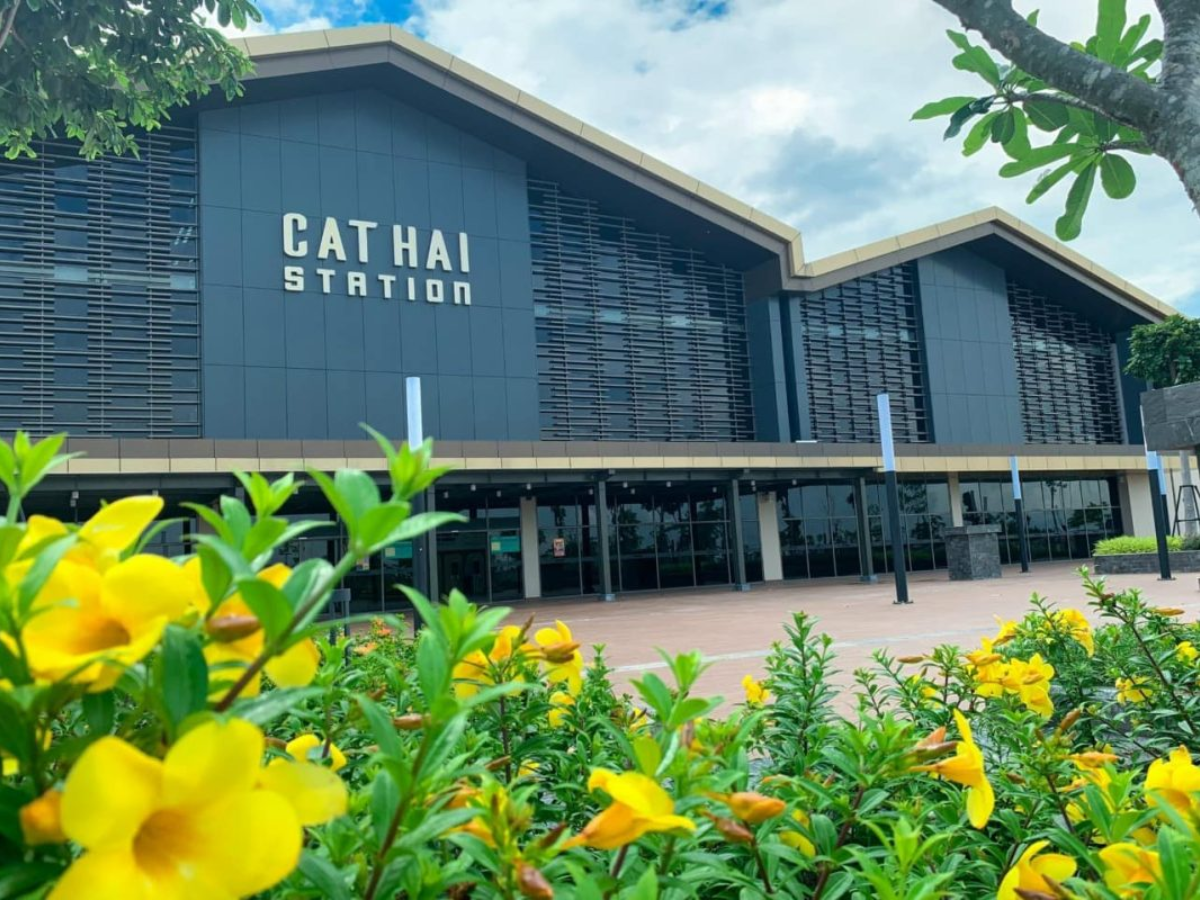
Vibrant golden flower garden at Cat Hai wharf.
4. Experiences and notes when visiting Hang Pagoda (Hai Phong)
4.1. Best time to visit Hang Pagoda (Hai Phong)
To make your trip to Hang Pagoda (Hai Phong) more complete, choosing the right time is important. The festival season runs from the first to the second lunar month with many major prayers for peace and remembrance activities, making it an ideal period to immerse yourself in the sacred and vibrant atmosphere. Additionally, on the 2nd and 3rd days of the 11th lunar month, the pagoda holds a major ceremony commemorating the monks of the Truc Lam Zen sect, attracting a large number of tourists and Buddhists.
Those who love a quiet space can visit the pagoda early in the morning, from 6 AM to 8 AM, or early in the afternoon to avoid the peak crowds. During this time, the space is serene, suitable for practicing Buddhist rituals. When entering the pagoda, you should choose modest and polite attire, avoiding shorts, tank tops, or short skirts to show respect for the sacred space.
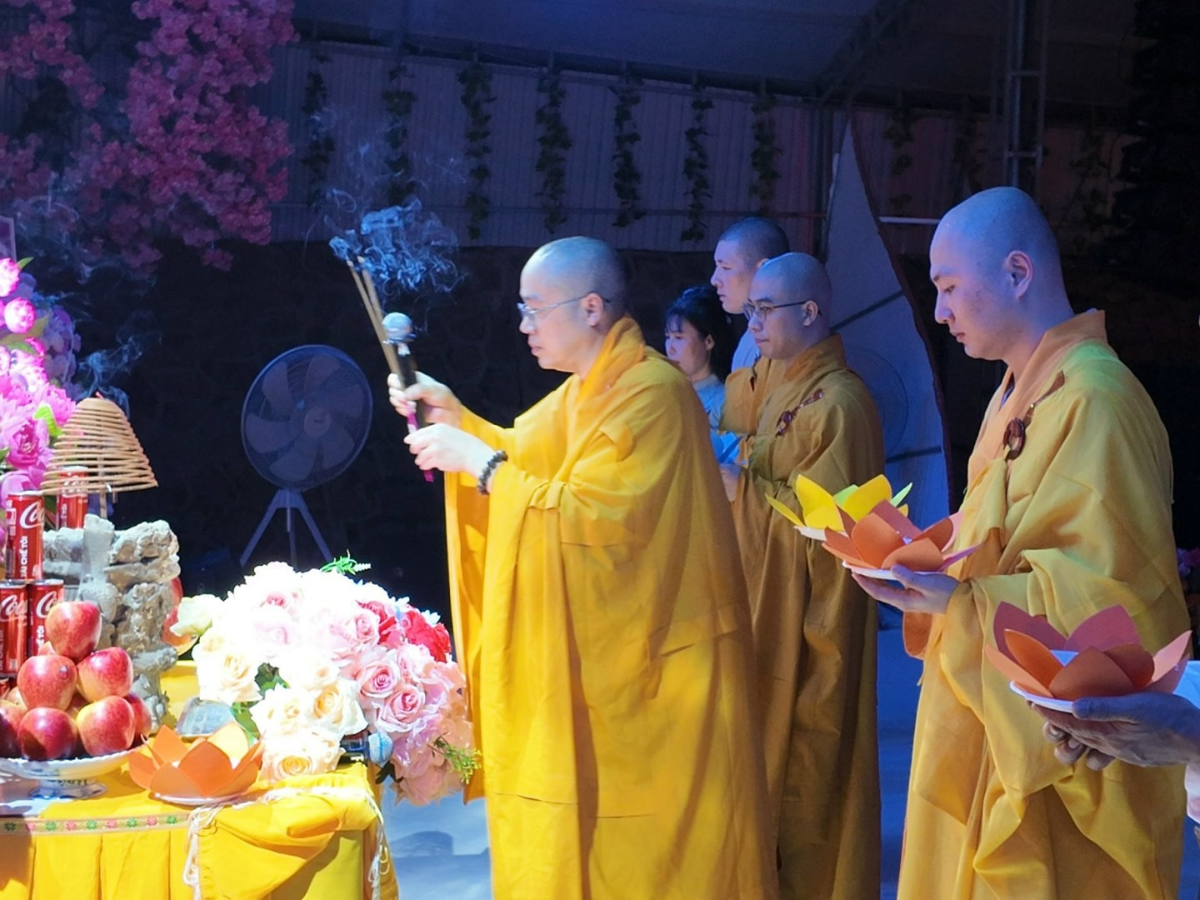
Festivals are held annually at Hang Pagoda (Hai Phong). (Source: Collected)
4.2. Tips for check-in and staying safe while traveling
At Hang Pagoda (Hai Phong), some ideal spots to capture memories are the three-gate pagoda entrance with its ancient architecture, the three-tiered bell tower with curved roofs, the garden with diverse Buddha statues, or the pagoda yard shaded by ancient trees. For beautiful photos, take advantage of natural light in the morning or late afternoon.
When visiting, tourists must follow the guidelines for protecting the relic: do not climb, do not touch artifacts, do not litter, and maintain a quiet space in the sanctuary. When participating in Buddhist ceremonies, maintain order, do not gather in large crowds in the main area, and pay attention to respecting the pagoda's meditative space.
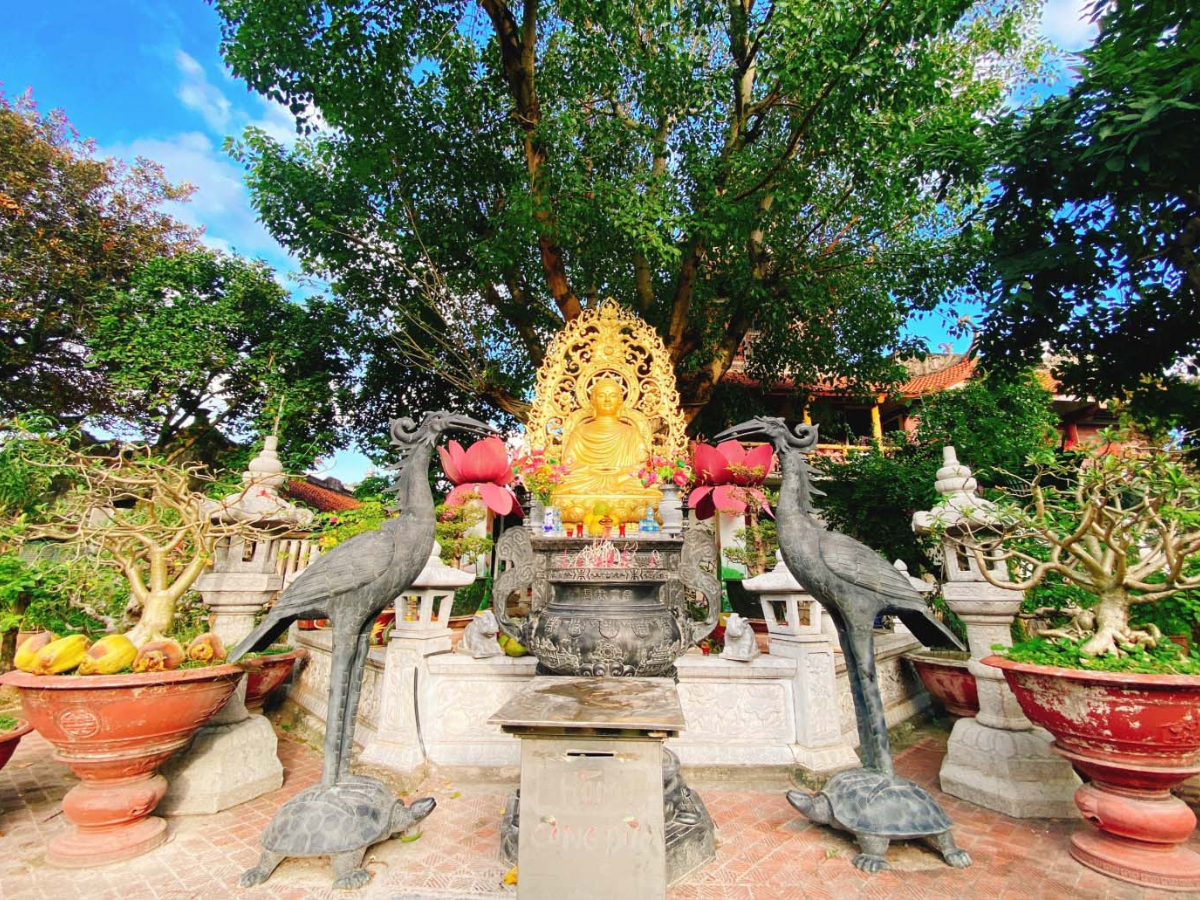
Tourists can check in at the statue of Buddha Shakyamuni. (Source: Compilation)
The pagoda is equipped with a security camera system and security forces are always on standby to assist and remind visitors. Thanks to this, tourists can rest assured to perform spiritual activities fully, enjoying the unique and safe local cultural atmosphere.
Hang Pagoda (Hai Phong), with its two representative temples, Du Hang and Hang Do Son, has become an important historical, cultural, and spiritual symbol for the people of the port city. Experiencing the peace here combined with unique entertainment and cultural attractions will bring tourists in 2025 a meaningful and memorable trip.







